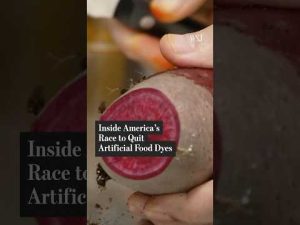**California’s $20 Minimum Wage: A Recipe for Disaster?**
In surprising news that’s not so surprising after all, a recent study from the National Bureau of Economic Research claims California may have bitten off more than it can chew with its ambitious $20 minimum wage law. Since implementing this hefty pay hike back in April 2024, the Golden State has seen a staggering job loss, particularly in the fast-food sector where 18,000 jobs vanished faster than a burger at a late-night drive-thru. Who would have thought that raising wages could lead to demotions at the fast-food counter? Apparently, everyone but the policymakers who championed this initiative.
Before the wage policy took effect, California’s employment growth in fast food mirrored the national trend. However, after the minimum wage increase, the state’s job loss estimates ranged between 2.3% to 3.9%, while the rest of the country continued on a steady path. It seems that in their quest for a living wage, policymakers may have forgotten that the laws of economics apply in the fast food line just as they do anywhere else.
While many might argue that employees should receive a living wage—and who could disagree with that?—the implementation appears to have led to unintended consequences. As employers struggle to cover the skyrocketing labor costs, some have opted to cut jobs or even replace human workers with technology. For example, it is becoming increasingly common to see patrons ordering through touch screens or mobile apps instead of directly interacting with employees. After all, if you can order your meal without having to deal with waiting for someone to get your order right, who wouldn’t take that option?
For those who love fast food, the new reality could lead to empty stomachs rather than full ones, as the economic consequences of the minimum wage increase continue to unfold. Critics of the policy might suggest that if flipping burgers is now a $20-an-hour gig, you might as well expect robot chefs to work the fryers soon! Surely, the machine could maintain a more consistent cooking temperature than the average worker grappling with order mistakes while juggling multiple tasks. It’s a battle of convenience and cost that is reshaping the fast-food landscape.
In perhaps an even more astonishing twist, cities within California have decided that more is better, voting to boost minimum wages even higher. Los Angeles Mayor has grand plans to raise minimum wages for hotel and airport workers to $30 an hour by 2028! It seems like there’s no ceiling to the numbers being thrown around. If $20 is good, why not $100?
While some may regard these wage increases as progressive, they also raise pressing questions about sustainability and job availability. The notion that restaurants, especially chains, should be forever responsible for supporting entire families on entry-level wages ignores a fundamental truth. These positions have traditionally been seen as stepping stones for young people entering the workforce, not careers meant to support a family of five.
The situation in California marks a broader trend across the nation, where the balance between fair wages and job viability continues to tilt in precarious ways. And while the studies indicate a sober reality, the politicians still have their heads in the clouds, chanting slogans without considering the potential for job losses or the actual economics at play. As they pave the road to higher wages, it’s crucial to ponder who will be left driving the cars and flipping the burgers at the end of the day.







